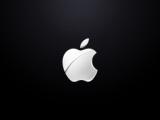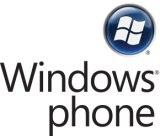Archives
Mobile operating system
 Android (operating system) -?Android is a mobile operating system that uses a modified version of the Linux kernel. It was initially developed by Android Inc., a firm later purchased by Google. Android is a software stack for mobile devices that includes an operating system, middleware and key applications. Google Inc. purchased the initial developer of the software, Android Inc., in 2005. Google and other members of the Open Handset Alliance collaborated on Android’s development and release. The Android Open Source Project (AOSP) is tasked with the maintenance and further development of Android.
Android (operating system) -?Android is a mobile operating system that uses a modified version of the Linux kernel. It was initially developed by Android Inc., a firm later purchased by Google. Android is a software stack for mobile devices that includes an operating system, middleware and key applications. Google Inc. purchased the initial developer of the software, Android Inc., in 2005. Google and other members of the Open Handset Alliance collaborated on Android’s development and release. The Android Open Source Project (AOSP) is tasked with the maintenance and further development of Android.
Symbian (Operating System) - Symbian has the largest share in most markets worldwide, but lags behind other companies in the relatively small but highly visible North American market. This matches the success of its largest shareholder and customer, Nokia, in all markets except Japan. In Japan Symbian is strong due to a relationship with NTT DoCoMo, with only one of the 44 Symbian handsets released in Japan coming from Nokia. It has been used by many major handset manufacturers, including BenQ, Fujitsu, LG, Mitsubishi, Motorola, Nokia, Samsung, Sharp, and Sony Ericsson. Current Symbian-based devices are being made by Fujitsu, Nokia, Samsung, Sharp, and Sony Ericsson. Prior to 2009 Symbian supported multiple user interfaces, i.e. UIQ from UIQ Technologies, S60 from Nokia, and MOAP from NTT DOCOMO. As part of the formation of the Symbian platform in 2009 these three UIs were merged into a single platform which is now fully open source. Recently, though shipments of Symbian devices have increased, the operating system’s worldwide market share has declined from over 50% to just over 40% from 2009 to 2010.
 Apple IOS -The Apple iPhone, iPod Touch and iPad all use an operating system called iOS, which is derived from Mac OS X. Third party applications were not officially supported until the release of iOS 2.0 on July 11th 2008. Before this, ‘jailbreaking’ allowed third party applications to be installed and this method is still available. Currently all iOS devices are developed by Apple and manufactured by Foxconn or another of Apple’s partners.
Apple IOS -The Apple iPhone, iPod Touch and iPad all use an operating system called iOS, which is derived from Mac OS X. Third party applications were not officially supported until the release of iOS 2.0 on July 11th 2008. Before this, ‘jailbreaking’ allowed third party applications to be installed and this method is still available. Currently all iOS devices are developed by Apple and manufactured by Foxconn or another of Apple’s partners.
R IM BlackBerry OS -This OS is focused on easy operation and was originally designed for business. Recently it has seen a surge in third-party applications and has been improved to offer full multimedia support. Currently Blackberry’s App World has over 15,000 downloadable applications.
IM BlackBerry OS -This OS is focused on easy operation and was originally designed for business. Recently it has seen a surge in third-party applications and has been improved to offer full multimedia support. Currently Blackberry’s App World has over 15,000 downloadable applications.
 Windows Mobile from Microsoft -The Windows CE operating system and Windows Mobile middleware are widely spread in Asia. The two improved variants of this operating system, Windows Mobile 6 Professional (for touch screen devices) and Windows Mobile 6 Standard, were unveiled in February 2007. It has been criticized for having a user interface which is not optimized for touch input by fingers; instead, it is more usable with a stylus. However, unlike the iPhone OS, it does support both touch screen and physical keyboard configurations. Windows Mobile’s market share has sharply declined in recent years to just 5% in Q2 of 2010. Microsoft is phasing out the Windows Mobile OS to specialized markets and is instead focusing on it’s new platform, Windows Phone.
Windows Mobile from Microsoft -The Windows CE operating system and Windows Mobile middleware are widely spread in Asia. The two improved variants of this operating system, Windows Mobile 6 Professional (for touch screen devices) and Windows Mobile 6 Standard, were unveiled in February 2007. It has been criticized for having a user interface which is not optimized for touch input by fingers; instead, it is more usable with a stylus. However, unlike the iPhone OS, it does support both touch screen and physical keyboard configurations. Windows Mobile’s market share has sharply declined in recent years to just 5% in Q2 of 2010. Microsoft is phasing out the Windows Mobile OS to specialized markets and is instead focusing on it’s new platform, Windows Phone.
 MeeGo from Nokia and Intel -At the 2010 Mobile World Congress in Barcelona, Nokia and Intel both unveiled ‘MeeGo’ a brand new mobile operating system which would combine the best of Moblin and the best of Maemo to create a truly open-sourced experience for users across all devices. As of 2011, Nokia has announced that it will no longer be pursuing MeeGo and will instead adopt Windows Phone 7 as its primary mobile OS.
MeeGo from Nokia and Intel -At the 2010 Mobile World Congress in Barcelona, Nokia and Intel both unveiled ‘MeeGo’ a brand new mobile operating system which would combine the best of Moblin and the best of Maemo to create a truly open-sourced experience for users across all devices. As of 2011, Nokia has announced that it will no longer be pursuing MeeGo and will instead adopt Windows Phone 7 as its primary mobile OS.
Prasant Kumar Rai

If you have any queries regarding anything on computers you can send us an email at This email address is being protected from spambots. You need JavaScript enabled to view it.

